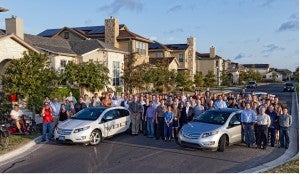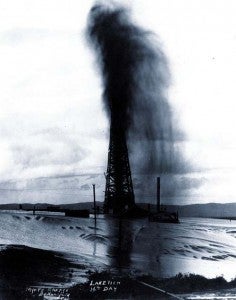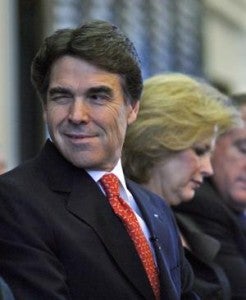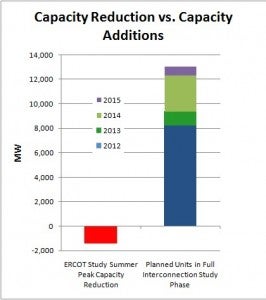By Mike McCarthy, 2011 EDF Climate Corps fellow at AT&T, MBA Candidate at the Fuqua School of Business at Duke University and John Schinter, Executive Director of Energy at AT&T. This commentary was originally posted on the EDF Business Blog.
I’ve always been interested in how energy efficiency projects can reduce operational costs and environmental impact. Not only are they a win-win for sustainability but I’d also like to focus my career on them when I graduate from Duke University’s Fuqua School of Business next year. I was excited to learn that my EDF Climate Corps fellowship would be working with AT&T’s Corporate Real Estate (CRE) division this summer. I knew that AT&T was working aggressively to increase energy efficiency and had a goal for 2011 to reduce company electricity consumption relative to network data growth by 17 percent over 2010. I also knew that AT&T’s 2010 EDF Climate Corps fellow helped the company identify opportunities to cut lighting energy use by 80% at its 250 largest central offices, a project that is currently underway in many of these locations. I looked forward to contributing to AT&T’s progress on energy efficiency. My project to evaluate the energy savings from optimizing the use of free-air cooling—as opposed to mechanical cooling systems—uncovered real and scalable results. Recently I sat down with my boss for the summer, John Schinter, AT&T executive director of energy, to chat about our key findings.
John: Mike, with your help, we accomplished a lot in the past three months of your EDF Climate Corps fellowship. The hard work certainly has paid off. What energy efficiency opportunities did you discover this summer?
 Mike: It turns out that about a quarter of AT&T’s largest heat producing buildings are located in cool climates. Furthermore, their utility bills show a historic pattern that suggests that they can use more outside air for cooling instead of using air cooled by energy-consuming chiller units. It was an important first step to identify 250 buildings that could benefit from optimizing economizer mode, or free-air cooling.
Mike: It turns out that about a quarter of AT&T’s largest heat producing buildings are located in cool climates. Furthermore, their utility bills show a historic pattern that suggests that they can use more outside air for cooling instead of using air cooled by energy-consuming chiller units. It was an important first step to identify 250 buildings that could benefit from optimizing economizer mode, or free-air cooling.
John: Participant buy-in is fundamental to any successful program. Talk a little about how you helped ensure that the property managers were involved.
Mike: You’re right. Buy-in is critical here. Early in the process, we sent a quick email survey out to the property managers of all the buildings to determine how well they thought they were using free-air cooling. It was important to show that we were working with the property managers to secure funding for their buildings. These managers execute the day-to-day components of energy management so it was important to hear their voices from the outset of the project. It was amazing to watch as the responses came in. The property managers and building engineers have a lot of great ideas for energy savings projects. We just needed to help them build the business case for these investments.
John: The surveys made me confident that our data analysis technique was on to something big. Describe what you found.
Mike: Based on the responses to the surveys, AT&T could reduce its carbon footprint by over 50,000 metric tons of CO2/year by using this technology. That is equivalent to almost 9,000 cars removed from the road each year, according to the EPA greenhouse gas equivalencies calculator.
John: That’s great that the project uncovered a tangible way to help minimize environmental impact. But you also thought about the financial implications to AT&T. What were the highlights?
Mike: Yes. Looking at our database of existing energy audits to estimate costs at a high level, we found that on average, the free-air cooling building retrofit projects pay back in around two years. We’ve identified real potential savings in reducing the electricity used for cooling our buildings.
John: Your plan to identify energy savings projects in AT&T’s buildings using trends in utility bills and weather data really worked. In ten weeks, you helped us accomplish what would have taken years using site visits and third party energy audits. From an outside perspective, what do you think were the keys to success?
Mike: Sometimes making a breakthrough in energy efficiency requires a creative approach that combines thinking from several disciplines. We couldn’t have gotten to these results without using Six Sigma data analysis, statistics, geography, and engineering.
John: So the project found economic and environmental benefits of optimizing AT&T’s use of free-air cooling. What’s your recommendation on the future of free-air cooling at AT&T?
Mike: I designed the project with an ongoing monitoring mechanism that will be extremely useful to AT&T down the road. We can use the method of analyzing utility bill trends in the future to “flag” buildings in the system that could benefit from an upgrade. Because this project is scalable, the business case is that much stronger.
See a video case study on this free air-cooling project here and check out the video case study on AT&T’s lighting project mentioned above here.
EDF Climate Corps places specially-trained MBA and MPA students in companies, cities and universities to develop practical, actionable energy efficiency plans. Sign up to receive emails about EDF Climate Corps, including regular blog posts by our fellows. You can also visit our Facebook page or follow us on Twitter to get regular updates about this project.















